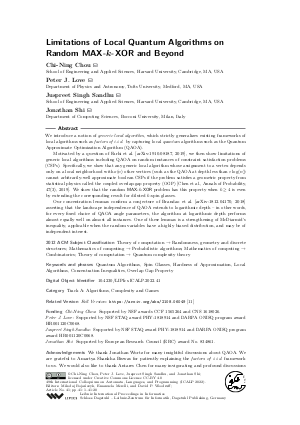LIPIcs.ICALP.2022.41.pdf
- Filesize: 0.78 MB
- 20 pages

 Creative Commons Attribution 4.0 International license
Creative Commons Attribution 4.0 International license



































Feedback for Dagstuhl Publishing